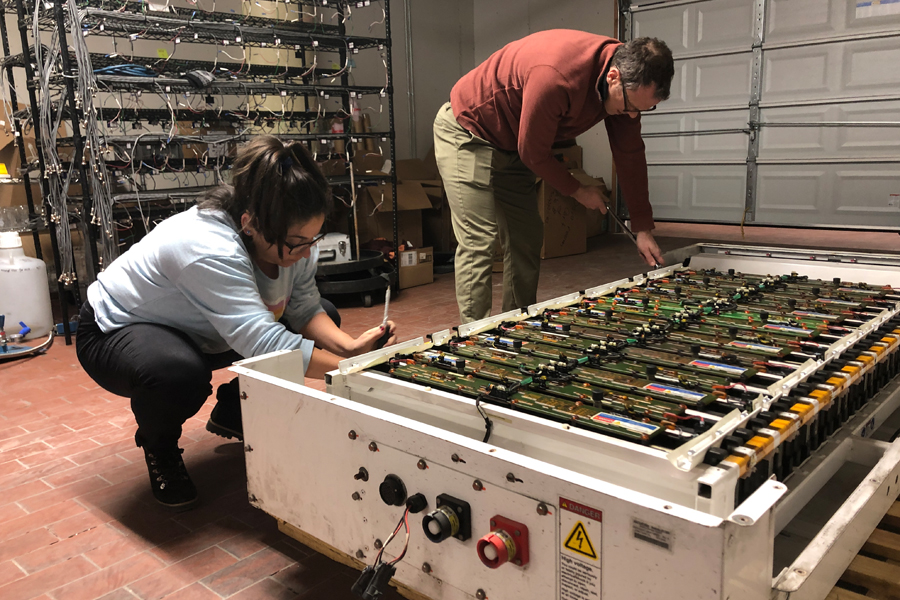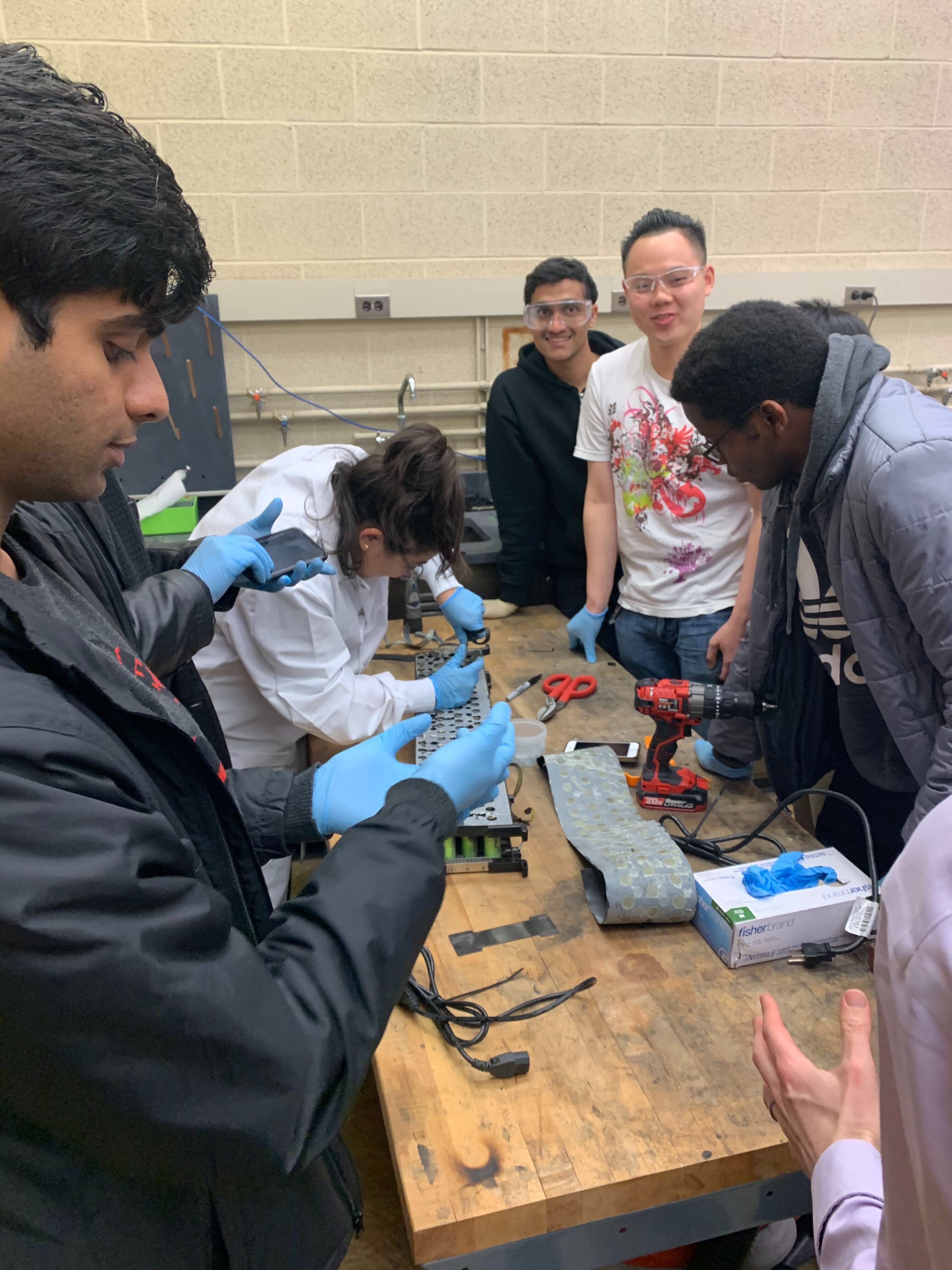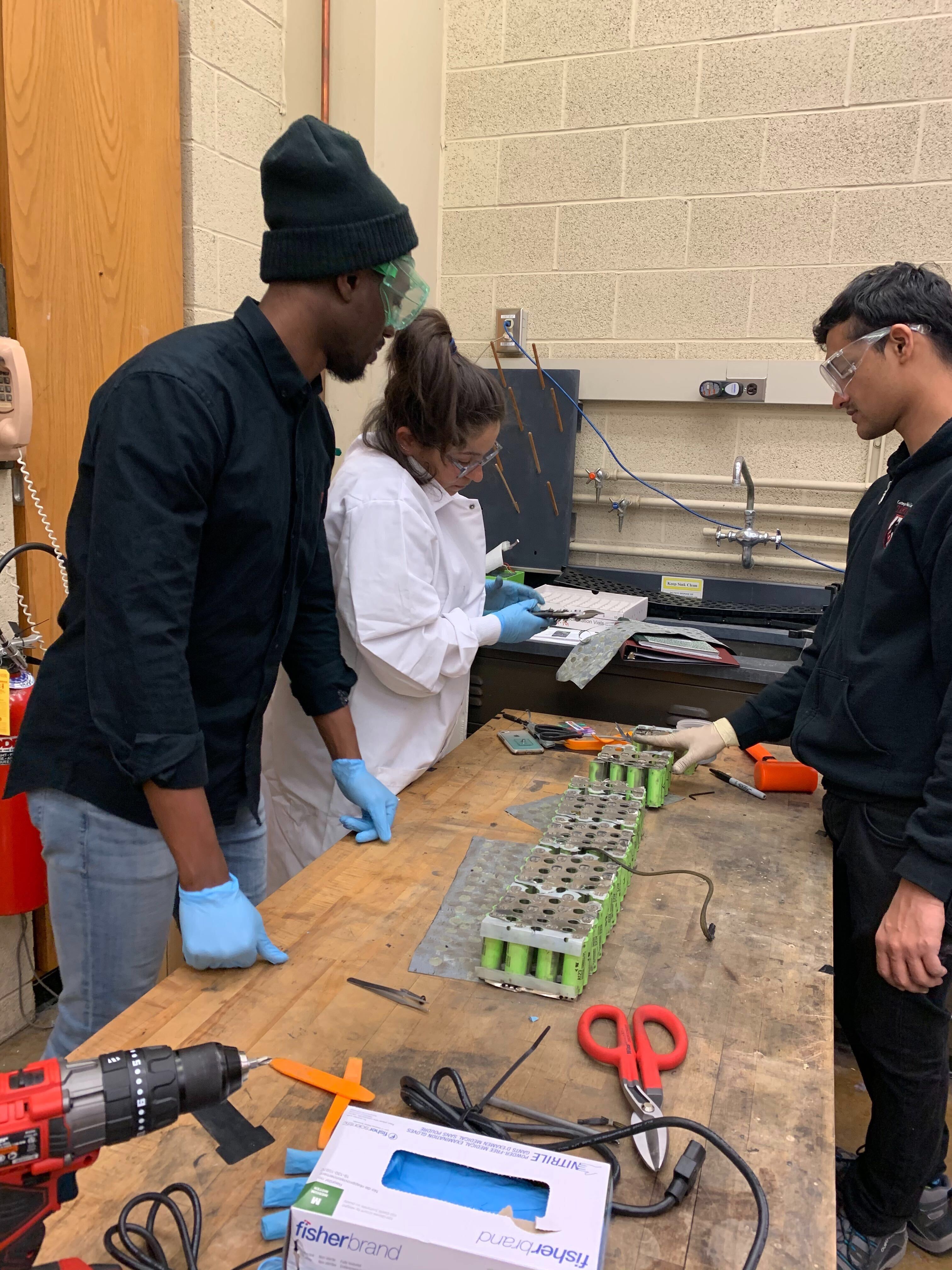
EST&P Project Course Responds to Africa’s Energy Access Challenges
This past spring semester, about a dozen master’s students in Carnegie Mellon University’s Energy Science, Technology and Policy (EST&P) Project Course worked hands-on with batteries to potentially identify re-use applications that could improve Africa’s energy access problem.
The course was a collaboration between Jay Whitacre, CMU Trustee Professor in Energy in the Departments of Engineering and Public Policy and Materials Science and Engineering; and Barry Rawn, Associate Teaching Professor in the Electrical and Computer Engineering Department at Carnegie Mellon Africa. Its objective was to investigate how discarded batteries could be re-used safely—following Whitacre’s recent work examining how a direct cathode recycling process would compare to other battery recycling processes in terms of greenhouse gas emissions and energy consumption.
Meanwhile, with support from two Global LEAP Awards, Rawn is collaborating with recycling companies in Rwanda and Nigeria that have hired CMU-Africa graduates to explore re-purposing and properly recycling solar e-waste.
“The two potential benefits of this work are to manage the battery waste stream in a more environmentally-friendly way and to lower the overall cost of energy storage, specifically in sub-Saharan Africa where Barry works and where I focus my research,” said Katrina Ramirez-Meyers, a dual PhD student in Engineering and Public Policy and Materials Science and Engineering who worked closely with the students in the laboratory.
Ramirez-Meyers says there is a big push right now for decentralized energy systems like solar photovoltaics in sub-Saharan Africa.
“Batteries play an important role in stabilizing the power that solar systems provide since solar fluctuates,” said Ramirez-Meyers.
After acquiring a large, used hybrid bus battery pack, the students were tasked with disassembling it at the individual cell level, a novel approach, according to Ramirez-Meyers. For some, this was their first time working hands-on with batteries.


“The lab session was fun, especially learning how to disassemble a battery pack,” said recent EST&P graduate Kwadwo Sarpong (pictured above in the second photo, at left). “I had the opportunity to put things together too, which gave me a holistic view of how a lithium iron phosphate battery actually works.”
Afterwards, the students collected data. Ramirez-Meyers said there were multiple major contributions by the students, such as Tanmay Nema who determined a more logical way to randomly sample the over 1,500 cells inside the pack.
After collecting the data, the students authored three resulting reports. Sarpong and his collaborator Léandre Berwa analyzed the best way to sort the cells in order to enhance performance and lifetime. Another student group investigated the options for re-using electric vehicle batteries and found that repurposing a battery by rebuilding it reduces the environmental impact more than making a new battery of similar, usable capacity from scratch.
“This type of work—evaluating whether these could be effective solutions to energy problems—is what the EST&P Program is about,” said EST&P Program Director and Materials Science and Engineering Professor Paul Salvador. “The responsiveness of our faculty is one of the many strengths of the Program, and Jay and Barry really stepped up to work together in an interdisciplinary way to respond to societal needs.”
Whitacre, Rawn and Ramirez-Meyers are continuing to work over the summer to quantitatively assess the project.
Learn more about earning a master’s degree in Energy Science, Technology and Policy
